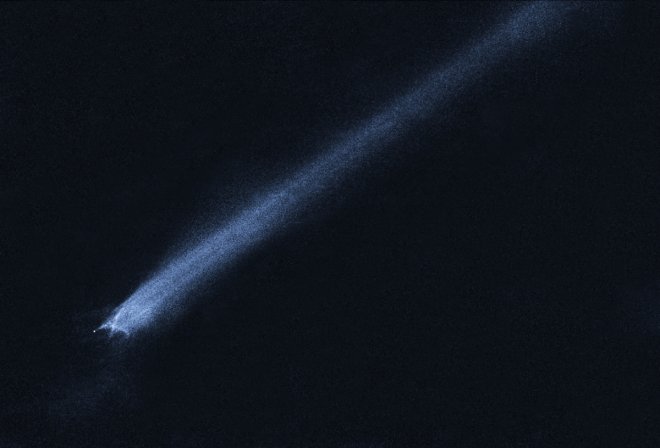
US space agency NASA is preparing to test limitations and strengths of its network of observatories when a small asteroid is expected to fly-by Earth in October, said its team of researchers who believe that the celestial object is orbiting at a far safer distance.
National Aeronautics and Space Administration (NASA) said the asteroid in question, TC4, is expected to fly by Earth on October 12, at a distance of more than 6,800 km. Last time the asteroid made a fly-past of the earth was between October 4 and 11, 2012, though the exact distance of the 2017 was not exactly estimated.
The TC4 asteroid is estimated to be slightly larger than the one that had hit Russian town Chelyabinsk in February 2013 but the focus this time is on its trajectory, to "nail down its exact path."
Indian-origin space scientist Vishnu Reddy, a Professor at the University of Arizona said, "this is a team effort that involves more than a dozen observatories, universities and labs across the globe so we can collectively learn the strengths and limitations of our near-Earth object observation capabilities."
"The question is, how prepared are we for the next cosmic threat?" said Vishnu Reddy. "So we proposed an observational campaign to exercise the network and test how ready we are for a potential impact by a hazardous asteroid."
Scientists from NASA's Centre for Near-Earth Object Studies (CNEOS) at the Jet Propulsion Laboratory (JPL) in California, have estimated the asteroid 2012 TC4 to pass by earth at no closer than 6,800 km to as far away as 270,000 km.
"Scientists have always appreciated knowing when an asteroid will make a close approach to and safely pass the Earth because they can make preparations to collect data to characterise and learn as much as possible about it," said Michael Kelley, NASA scientist heading the team of TC4 observation campaign.
This time, NASA network of scientists and observatories are gearin up for testing its own strengths and capabilities in case of a potential real asteroid threat.
"Being able to observe small asteroids like this one is like looking at samples in space before they hit the atmosphere and make it to the ground," Reddy had said when TC25 was observed last year. "It also gives us a first look at their surfaces in pristine condition before they fall through the atmosphere."









